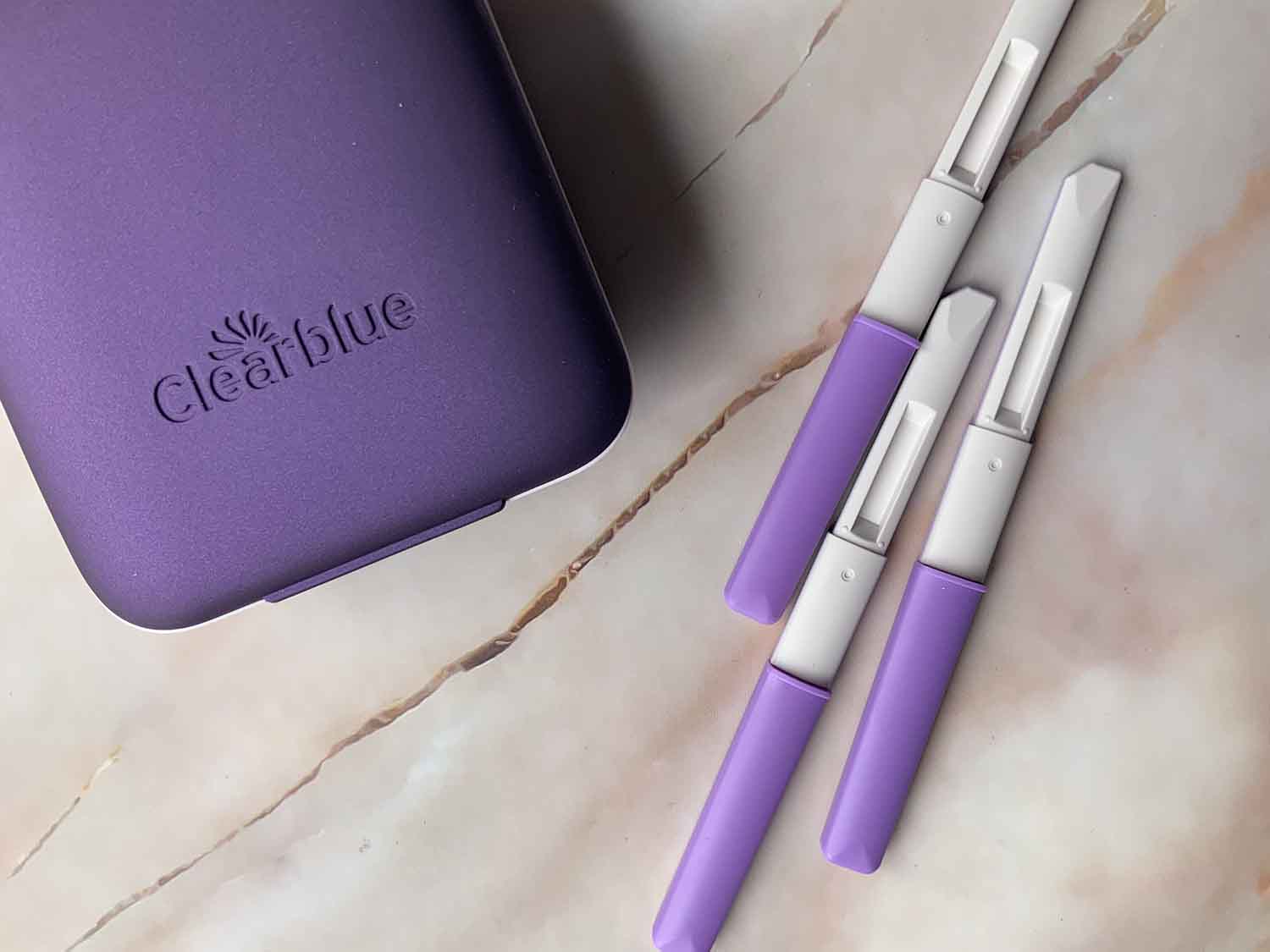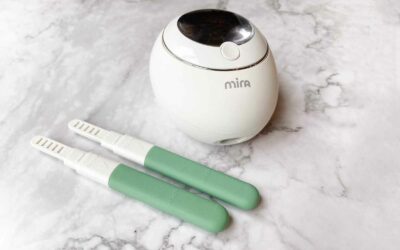Trying to conceive?
There are so many fertility monitors available—way more than there were just 5 years ago … which can make it hard to separate out the hype from what actually works.
I’m a nurse and fertility educator. I’ve taught over 300 couples how to manage their fertility naturally using the Clearblue Fertility Monitor. In my view, it still remains the best, most reliable fertility monitor on the market.
I know a lot about the pros and cons of this particular device—including the science of how it works. It’s a solid choice for women and couples who want to increase their chances of getting pregnant.
In this article, I share information on the research and science behind the monitor which you won’t find anywhere else.
Already made your choice? Clearblue monitors are easy to find. Just about every drugstore carries it … but they tend to be a lot cheaper online.
Here are links to the specific fertility monitor I review in this article. To use the monitor, you’ll also need to purchase at least one box of Clearblue Fertility Monitor Test Sticks. You’ll likely need 10 to 20 sticks per cycle, so one box is enough to get your started … and who knows, maybe you’ll be pregnant before you need another box!
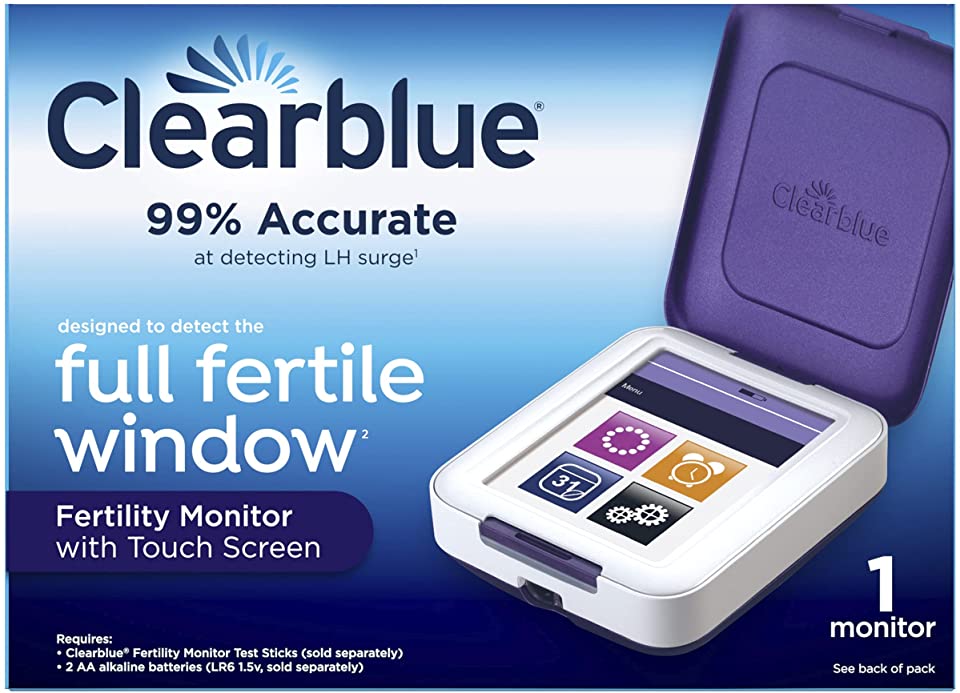
Clearblue Fertility Monitor
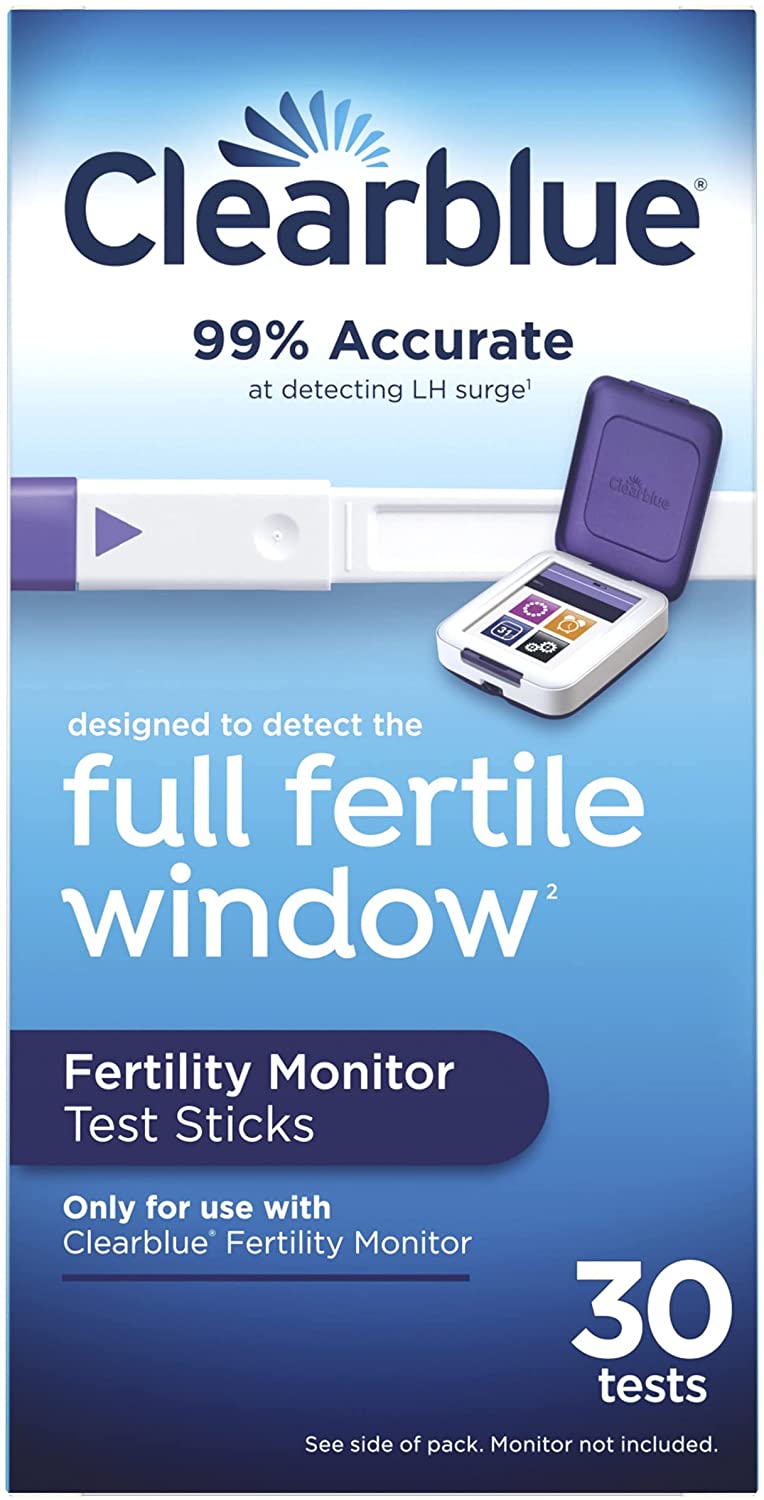
Clearblue Fertility Monitor Test Sticks
(Some of the links on this page are affiliate links. Thank you for purchasing through this page and supporting our company.)
What is the Clearblue Fertility Monitor?
The Clearblue Fertility Monitor is a handheld electronic device that helps you identify the most fertile days in each menstrual cycle by measuring your luteinizing hormone (LH) and estrogen levels.
It tells you which days of your cycle are the most fertile, allowing you to time intercourse and optimize your chances of becoming pregnant.
It’s really easy to use. It’s like taking a pregnancy test each day.
Simply collect a sample of your first morning urine, and then dip a single-use Clearblue Fertility Monitor Test Stick into the urine sample for 15 seconds.
(Alternatively, you can simply pee on the stick, but that tends to give less reliable results, which is why I always recommend dipping.)
Once you’re done exposing the test stick to your urine sample, insert it into the monitor for analysis. After 5 minutes the device will return one of three possible readings:
- low fertility
- high fertility
- peak fertility
“Low fertility” days are days in your cycle in which pregnancy is unlikely.
“High fertility” and “Peak fertility” are the most fertile days of your cycle.
Have sex on “high” and “peak” days to increase your chances of getting pregnant.
(Yes, it’s actually as simple as that)
The monitor will usually begin asking for tests on cycle day 6 (which is 6 days after the beginning of your period.) There’s a lot of variability between women, but the typical progression of monitor readings is a string of low fertility days, followed by a series of high fertility days, culminating in two peak fertility days.
The fertility levels the monitor returns after the peak days are always the same—one high fertility day followed by low fertility days until the end of the cycle, when your period returns (or it doesn’t … which means you should take a pregnancy test!)
| Cycle Day | 1 | 2 | 3 | 4 | 5 | 6 | 7 | 8 | 9 | 10 | 11 | 12 | 13 | 14 | 15 | 16 | 17 | 18… |
| Fertility Result | X | X | X | X | X | low | low | low | high | high | high | high | peak | peak | high | low | low | low… |
But what do all these monitor readings really mean? Each of these shifts—from low to high, and high to peak—correspond to specific shifts in your fertile hormones which occur in the lead-up to ovulation.
And it’s the precise identification of the hormone shifts, measured directly in your urine sample, which makes the Clearblue Monitor such a reliable device.
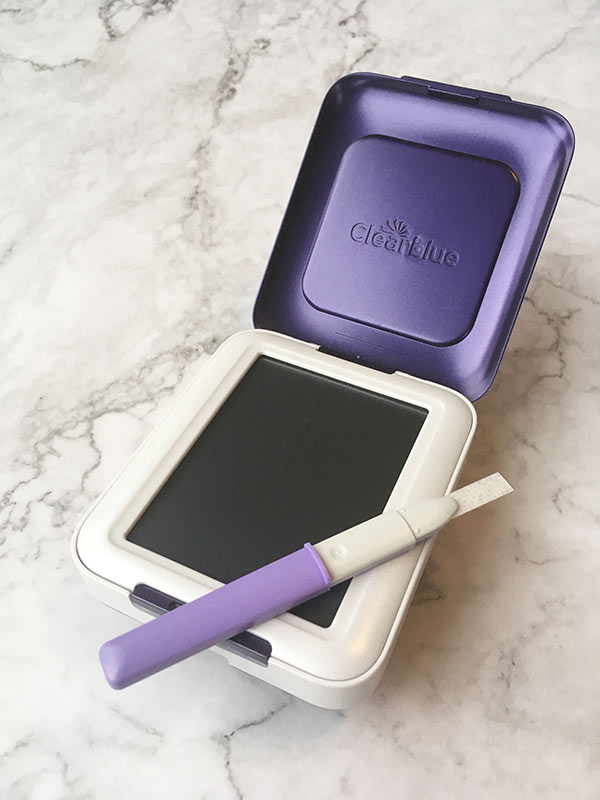
The Clearblue Fertility Monitor isn’t new. It’s been around since 1999.
When it launched, it was called the “ClearPlan Easy Fertility Monitor.” Over the years the name has changed from ClearPlan to Clearblue, and the touchscreen model is called the “Clearblue Fertility Monitor.” But the underlying tech in the monitor has always remained the same, and the test sticks were never redesigned.
The Clearblue brand has always been an industry leader in at-home testing of reproductive hormone levels—they’re the company which invented and launched the first at-home pregnancy test, way back in 1985!
Why Do Couples Use Fertility Monitors?
Simply put, fertility monitors can help couples get pregnant faster, naturally.
There are lots of ways to track the hormone shifts in your menstrual cycle and pinpoint your days of highest fertility. One common way, which is an entirely free option, is simply to track and chart the quality and quantity of your cervical mucus.
But however you determine the fertile days, research has shown that knowing which days intercourse is most likely to lead to conception allows couples to time intercourse effectively, and that can help couples become pregnant faster [1]Bouchard TP, Fehring RJ, Schneider MM. Achieving Pregnancy Using Primary Care Interventions to Identify the Fertile Window. Front Med (Lausanne). 2018;4:250. Published 2018 Jan 9. … Continue reading
Clearblue’s own research [2]Robinson, J. E., Wakelin, M., & Ellis, J. E. (2007). Increased pregnancy rate with use of the Clearblue Easy Fertility Monitor. Fertility and sterility, 87(2), 329–334. … Continue reading showed that using the monitor can help you get pregnant up to 89% faster, and that using the monitor increases the chances of getting pregnant within the first two cycles of use.
What’s the Difference between Tracking with the Clearblue Monitor and Tracking Using LH Test Sticks?
Unlike most other fertility monitors on the market, the Clearblue Fertility monitor tracks two hormonal fluctuations throughout the menstrual cycle—estrogen and luteinizing hormone (LH).
Tracking both estrogen and LH directly from urine samples is what makes the Clearblue Monitor different (and better) than other fertility monitors. Research has shown that the urinary levels of LH and estrogen correspond directly to blood hormone levels [3]Behre, H. M., Kuhlage, J., Gassner, C., Sonntag, B., Schem, C., Schneider, H. P., & Nieschlag, E. (2000). Prediction of ovulation by urinary hormone measurements with the home use ClearPlan … Continue reading.
LH test sticks (also known as Ovulation predictor kits/OPKs) also test urinary hormone levels, but only test LH levels, not estrogen. (There are currently no estrogen-only test sticks on the market). OPKs are inexpensive and they do a good job identifying the LH surge and the peak days of fertility … but because they don’t test urinary estrogen levels, LH test sticks alone can’t identify the full fertile window (the high fertility days), which the Clearblue monitor measures via the rise in estrogen levels.
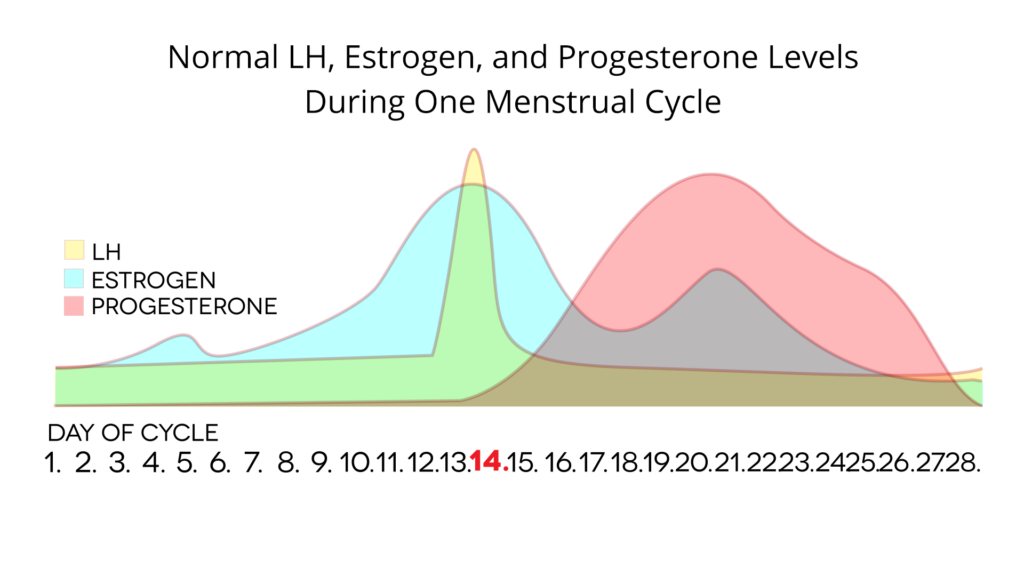
In the chart above, the gradual rise in estrogen levels (blue) precedes the LH surge (yellow). Only the Clearblue monitor can identify the estrogen rise and the beginning of heightened fertility.
Why does this matter?
It’s simple biology.
While an egg only lives 12 to 24 hours, as long as estrogen levels are high, sperm can live for 3-5 days in the woman’s body. Using a Clearblue Monitor can help you accurately identify a longer fertile window than other monitors or LH test sticks can, giving you a better chance of having viable sperm present at that crucial moment when ovulation occurs.
Note on Using the Clearblue Monitor to Avoid Pregnancy: If you want to avoid pregnancy, you can’t simply use the Clearblue Monitor “backwards.” Even on a “low” day, conception still might be possible. Clearblue clearly states in the instruction booklet that comes with the monitor it was not designed as a means of avoiding pregnancy, nor is it FDA-approved as a contraceptive device.
Couples who do want to use a fertility monitor to avoid pregnancy should look into the Marquette Method. The Marquette Method is a type of Natural Family Planning. It’s the method of NFP we teach at Vitae Fertility.
The Marquette Method uses the Clearblue Fertility Monitor as a tool to measure hormone levels … and this can greatly simplify fertility tracking and charting as a means to avoid pregnancy.
In order for it to be an effective method of avoiding pregnancy, however, you need to learn the full method from a Marquette Method instructor—it’s a tad more complicated than just avoiding intercourse on “high” and “peak” days of your menstrual cycle.

Frequently Asked Questions
What Do I Need to Get Started? How Many Test Sticks Will I Use?
To use the Clearblue Fertility Monitor you’ll need two things—the monitor itself, and a pack of Clearblue Fertility Test sticks. The cost for these can vary (click on the links to see the current price), but it’s generally about $130 to buy the Clearblue Monitor monitor and about $35 for a box of 30 test sticks.
How many sticks you will need varies depending on when you ovulate each month. Women who are using the monitor to conceive and ovulate on or around cycle day 14 will usually use 10 sticks per month, and women with longer cycles might use 20 sticks per month.
Is the Clearblue Fertility Monitor Covered by Insurance?
In many cases fertility monitors are covered with Health Saving Accounts (HSA) and Flexible Spending Accounts (FSA). The ClearBlue Fertility Monitor (and the corresponding test sticks) can be covered, so check with your plan to make sure. If it is, then be sure to purchase the monitor at online retailers such as Amazon with your HSA/FSA card.
Does it Work For Women with Irregular Cycles?
For women with irregular cycles, a fertility monitor can be a big help in determining when you ovulate. The Clearblue monitor is a “smart” device—it learns and tracks your personal hormone levels and uses that information to help you accurately identify your most fertile days. Because it’s personalized to you, it works well for women with irregular cycles, as well as for women with polycystic ovarian syndrome (PCOS), who typically have higher-than-average estrogen levels and varying LH surges.
The monitor may not be a good fit, however, if you are breastfeeding, and/or if your cycles are shorter than 21 days or longer than 42 days. Be sure to consult the full list of disclaimers on the Clearblue website before purchasing. The monitor will not work if you are currently on hormonal birth control. Clearblue recommends waiting one cycle after discontinuing birth control before using the monitor to help you conceive.
How Does Clearblue Fertility Monitor Compare to Other Fertility Monitors?
The Clearblue Fertility Monitor is robust and reliable—and that’s the main reason why Dr. Fehring and the developers of the Marquette Method chose this monitor over the others as the foundation for their next-gen form of NFP.
Even now, 20 years later, the Marquette Method still uses the Clearblue monitor because it’s proven to be the best one to help women avoid pregnancy. They continue to research other monitors (including the Mira monitor) as they become available, but currently only the Clearblue Monitor is compatible with Marquette.
Mira Fertility Monitor
The Mira fertility monitor provides numerical results, so you get specific concentrations of hormones—your actual hormone levels—for estrogen and LH. Absolutely this depth of quantitative data is useful in certain situations (such as if you’re troubleshooting hormone imbalances with a specialist), but we’ve found that having simple, easy-to-interpret results (low, high, peak and nothing in between) is all most women need or want to know … which is the days you have a high and peak chance of conceiving.
If you’re trying to avoid pregnancy, we have a separate article on using the Marquette Method of NFP with the Mira fertility Monitor, following Marquette’s Mira protocols.
Oova
Another comparable option is the Oova monitor, which measures luteinizing hormone and progesterone (LH surges right before ovulation and progesterone rises after ovulation). Because the Oova monitor does not measure at estrogen levels, it cannot help women determine the beginning of the fertile time in the cycle.
OvaCue
The OvaCue Fertility Monitor has been around about as long as the Clearblue Monitor. The OvaCue monitor measures electrolyte changes in the saliva and cervical mucus that can change throughout a cycle, changes which rise and fall with a woman’s estrogen levels.
Many women find the OvaCue an appealing option because it does not require an ongoing cost (it’s re-useable, and you don’t have to buy disposable test sticks). The Clearblue Monitor is usually a better choice, however, because it tracks estrogen levels directly (rather than indirectly with electrolyte changes.) It’s just more reliable.
Tempdrop
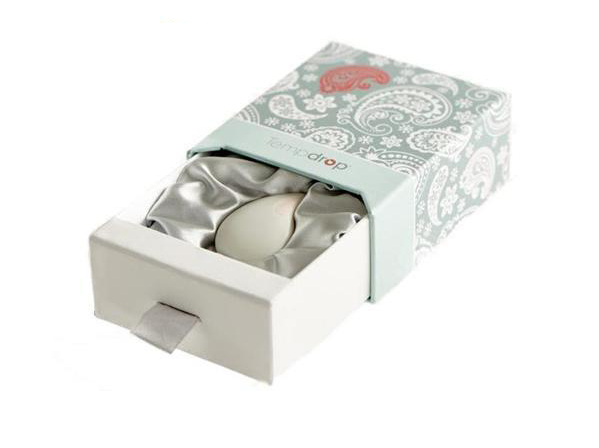
Finally, you should know about Tempdrop. The Tempdrop is a smart thermometer which tracks basal body temperatures (BBT). BBT rises after ovulation, along with the rise in progesterone … but it does not provide information leading up to when ovulation will happen.
The Clearblue Monitor does not measure progesterone levels, so you could pair the Clearblue Monitor with a TempDrop to get a fuller picture, or you could measure progesterone levels with single-use Proov urinary test sticks.
References
| ↑1 | Bouchard TP, Fehring RJ, Schneider MM. Achieving Pregnancy Using Primary Care Interventions to Identify the Fertile Window. Front Med (Lausanne). 2018;4:250. Published 2018 Jan 9. doi:10.3389/fmed.2017.00250 |
|---|---|
| ↑2 | Robinson, J. E., Wakelin, M., & Ellis, J. E. (2007). Increased pregnancy rate with use of the Clearblue Easy Fertility Monitor. Fertility and sterility, 87(2), 329–334. https://doi.org/10.1016/j.fertnstert.2006.05.054 |
| ↑3 | Behre, H. M., Kuhlage, J., Gassner, C., Sonntag, B., Schem, C., Schneider, H. P., & Nieschlag, E. (2000). Prediction of ovulation by urinary hormone measurements with the home use ClearPlan Fertility Monitor: comparison with transvaginal ultrasound scans and serum hormone measurements. Human reproduction (Oxford, England), 15(12), 2478–2482. https://doi.org/10.1093/humrep/15.12.2478 |

